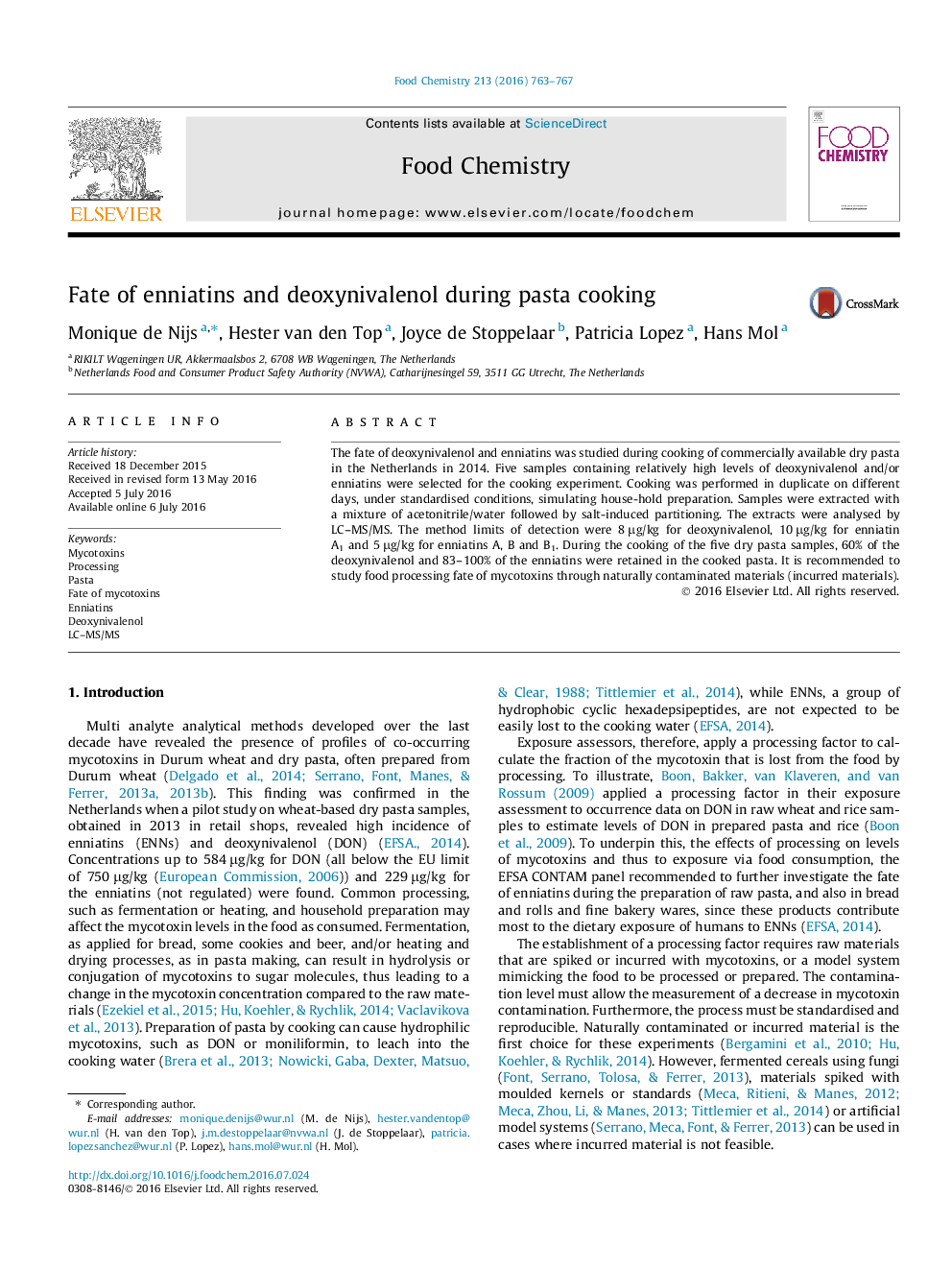| Article ID | Journal | Published Year | Pages | File Type |
|---|---|---|---|---|
| 7587732 | Food Chemistry | 2016 | 5 Pages |
Abstract
The fate of deoxynivalenol and enniatins was studied during cooking of commercially available dry pasta in the Netherlands in 2014. Five samples containing relatively high levels of deoxynivalenol and/or enniatins were selected for the cooking experiment. Cooking was performed in duplicate on different days, under standardised conditions, simulating house-hold preparation. Samples were extracted with a mixture of acetonitrile/water followed by salt-induced partitioning. The extracts were analysed by LC-MS/MS. The method limits of detection were 8 μg/kg for deoxynivalenol, 10 μg/kg for enniatin A1 and 5 μg/kg for enniatins A, B and B1. During the cooking of the five dry pasta samples, 60% of the deoxynivalenol and 83-100% of the enniatins were retained in the cooked pasta. It is recommended to study food processing fate of mycotoxins through naturally contaminated materials (incurred materials).
Related Topics
Physical Sciences and Engineering
Chemistry
Analytical Chemistry
Authors
Monique de Nijs, Hester van den Top, Joyce de Stoppelaar, Patricia Lopez, Hans Mol,
